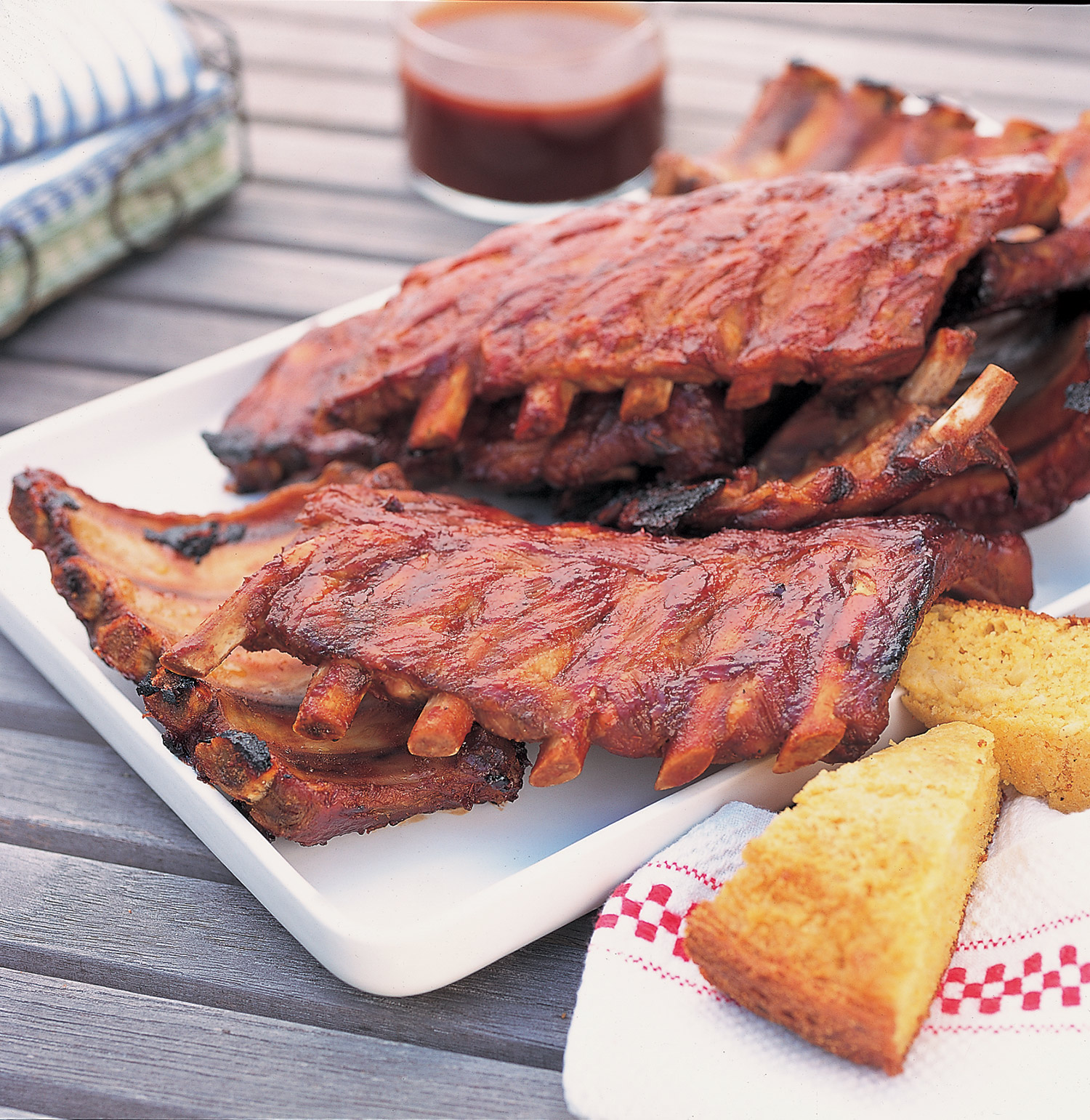
For the most succulent ribs, let the ribs sit (and actually become cool) in the poaching liquid. While simmering, many of the flavor compounds end up in the broth, but when the ribs are left in the poaching liquid for an hour or more, the meat reabsorbs moisture, making them even more succulent and flavorful.
Any time I’ve suggested a tool, a piece of equipment, or a culinary term that’s unfamiliar to you, you can go to Learn to Cook for more information.
First fill one or two wide, 6-to 8-quart pots 2/3 full with cold water and bring it to a boil. Add the onions, carrots, celery and peppercorns to the water (dividing them between both pots, if using) and simmer the vegetables for 15 to 60 minutes. Sprinkle the ribs generously all over with black pepper and submerge them in the boiling broth. Cover the pot and, when the broth comes back to a boil, reduce the heat to low and simmer baby-back ribs for 30 minutes and the larger ribs for 45 minutes (and beef short ribs for 1 hour and 15 minutes). Remove the pot from the heat and set it on a strong wire rack. Let the ribs sit in the hot liquid, uncovered, until almost cool. If time is an issue, however, increase the cooking time 10 minutes and then go directly to the next step, without letting the ribs cool.
Preheat oven to 400F. Spray two large shallow baking sheets with vegetable spray, and then line them with parchment paper or with nonstick aluminum foil. Transfer the ribs to the prepared baking sheet. (Discard the liquid and vegetables.) Brush the ribs liberally, on both sides, with barbecue sauce and place them, meaty-side up, in the oven. Roast 35 to 45 minutes, or until the ribs are sizzling and the sauce is only slightly charred looking, basting with more sauce, after the first 20 minutes. (If you’d like the ribs a bit more crusty-looking, jack up the heat to 425F for the last 20 minutes.)
Cut each full rack of ribs in half and pile them on a large warmed serving tray. Alternatively, use a sharp knife to cut in-between each rib, separating them completely. Serve them hot with a bowl of additional barbecue sauce, passed at the table.
The ribs can be poached several hours ahead and allowed to sit, submerged in the broth, at a comfortable room temperature, until you’re ready to apply the sauce and roast.
Vegetables to poach the ribs can be assembled ahead and kept in the freezer, well sealed.